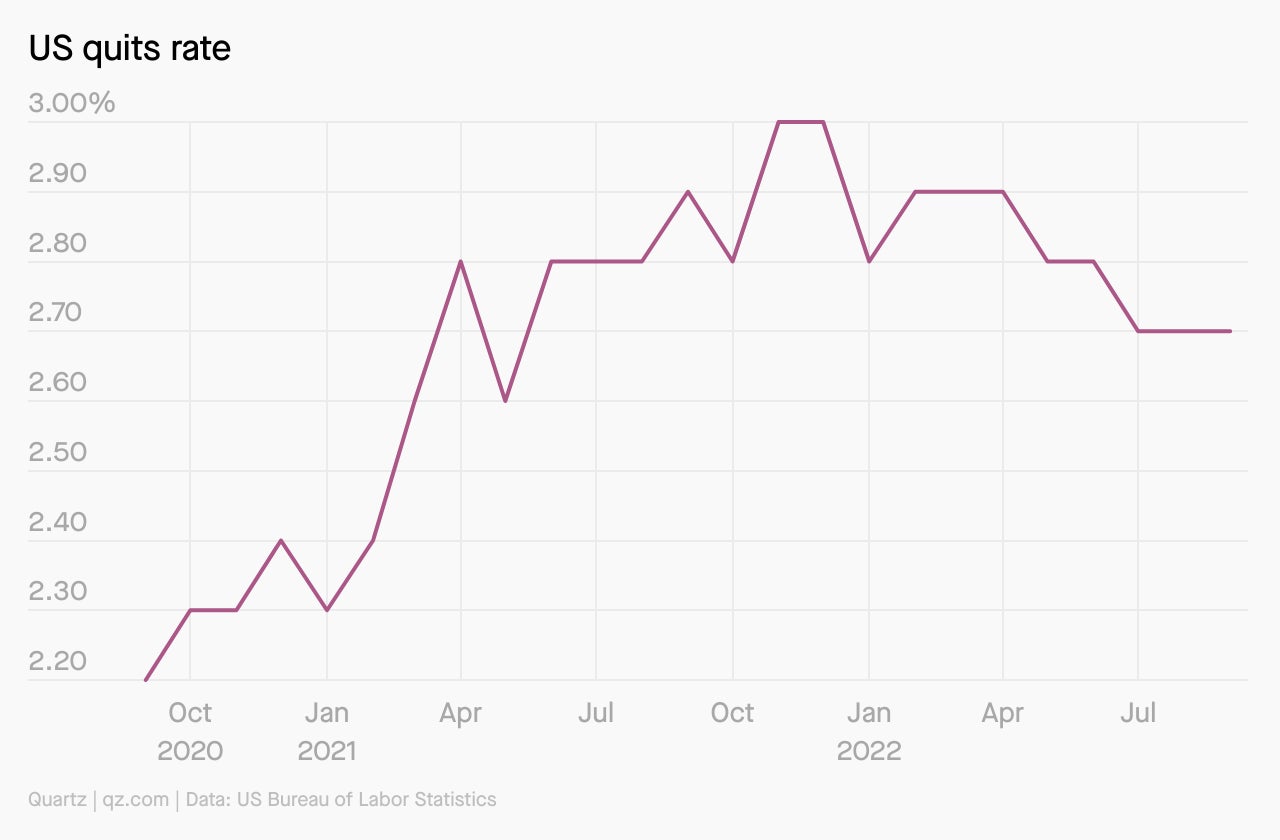Americans are still quitting fast enough to keep the Fed on an aggressive path
The Federal Reserve is expected to deliver another 75-basis-point hike this week

Americans are still quitting at near-record levels, according to new data from the Bureau of Labor Statistics. The overall quits rate—the percentage of the employed population that quit within a month—was 2.7% in September, the same as it was two months earlier. The quits rate for the private sector alone slowed down a hair, though, from 3% to 2.9%.
These rates show both how many opportunities workers are seeing at other firms and how confident they feel about leaving their jobs. Those workers are then rewarded for switching jobs: Their wages increased by 7.1% on an annual basis, according to the Atlanta Wage Tracker. That’s higher than the 5.2% raise that people who stay in their jobs have gotten in the past year.
In September, job openings in the US increased by 437,000 after dropping by nearly 900,000 in August. The ratio of openings per unemployed person—a stat that Fed chair Jerome Powell often cites in his monetary policy speeches—moved back up to 1.9 from 1.7 in the previous month.
This will prompt the Fed to continue raising rates more aggressively, as it has been doing. On Wednesday (Oct. 2), the Fed is expected to implement its fourth 75-basis-point hike in a row as it seeks to constrict job opportunities, which in turn will bring down wages and then prices. This will put the Fed on a path to move the federal funds rate (the rate at which banks lend to one another) up to 5% by March 2023, according to economists surveyed by Bloomberg.

The Fed shouldn’t be so obsessed with job openings
But job openings are an unreliable metric, argues Employ America, a labor advocacy research firm. Hiring technology makes it easier for firms to report that they’ve taken steps to recruit someone without doing much work, and ignores the fact that employers can do much more to increase hiring than just posting vacancies.
“A business making a short Facebook post about a job opening is treated the same as a business that hires a recruiter and sends interviewers to job fairs,” wrote Preston Mui, an economist at Employ America. “Accounting for recruitment intensity may be crucial to understanding the behavior of hires data over multiple business cycles.”
Further, posted vacancies aren’t always a clear sign that a firm is hiring a lot. Only 20% of new hires consist of unemployed people filling advertised vacancies. Most new hires comprise people who aren’t even looking for a job. Consequently, levels of hiring and job switching are actually better guidelines to capture how tight the labor market is.
